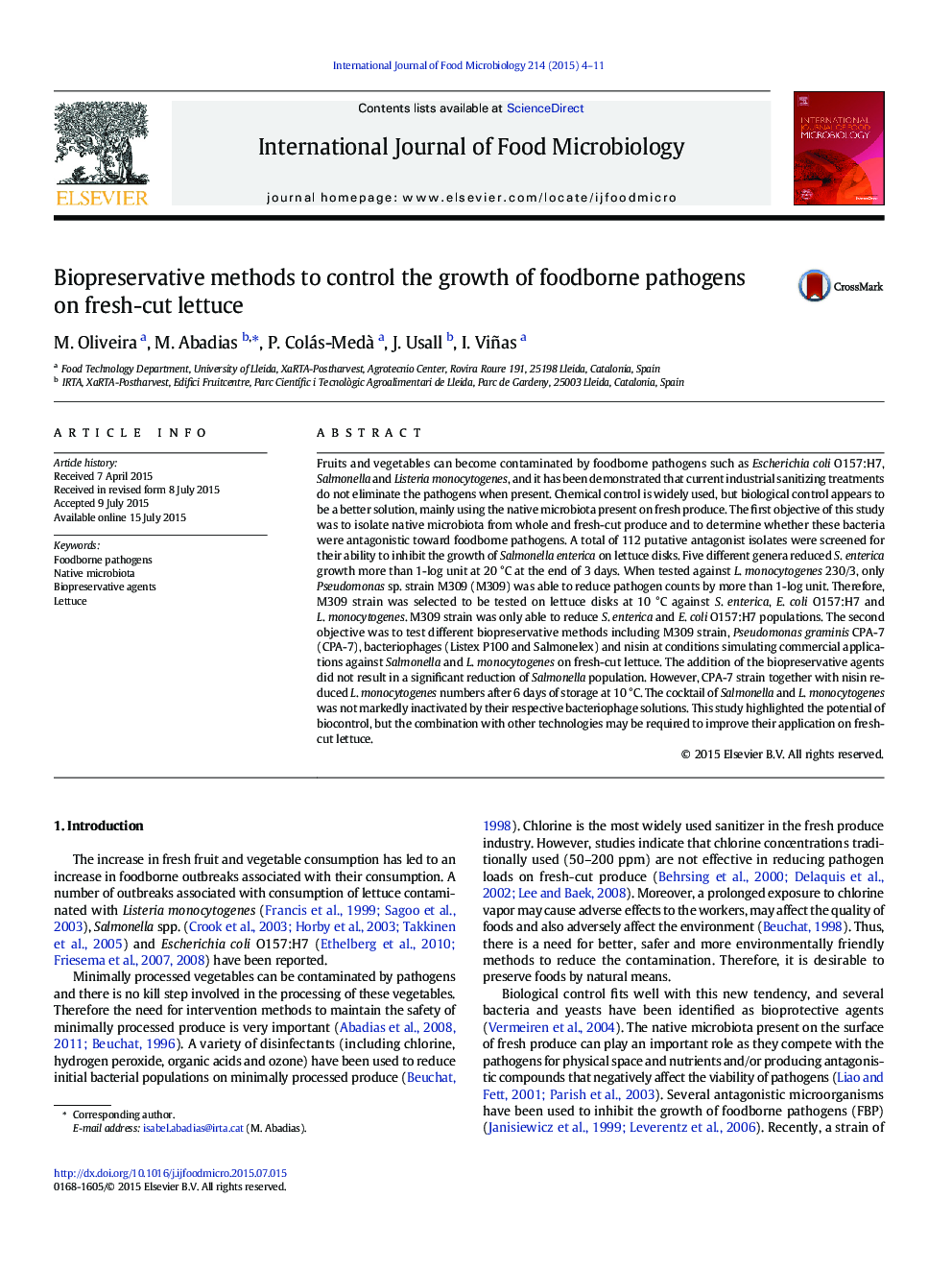| کد مقاله | کد نشریه | سال انتشار | مقاله انگلیسی | نسخه تمام متن |
|---|---|---|---|---|
| 4366454 | 1616569 | 2015 | 8 صفحه PDF | دانلود رایگان |
• Use of biopreservation against foodborne pathogens was examined.
• We isolated 8 putative antagonists from fresh and fresh-cut produce.
• Pseudomonas sp. M309 reduced foodborne pathogens counts at 10 °C on lettuce disks.
• Nisin and P. graminis CPA-7 reduced L. monocytogenes populations on fresh-cut lettuce.
Fruits and vegetables can become contaminated by foodborne pathogens such as Escherichia coli O157:H7, Salmonella and Listeria monocytogenes, and it has been demonstrated that current industrial sanitizing treatments do not eliminate the pathogens when present. Chemical control is widely used, but biological control appears to be a better solution, mainly using the native microbiota present on fresh produce. The first objective of this study was to isolate native microbiota from whole and fresh-cut produce and to determine whether these bacteria were antagonistic toward foodborne pathogens. A total of 112 putative antagonist isolates were screened for their ability to inhibit the growth of Salmonella enterica on lettuce disks. Five different genera reduced S. enterica growth more than 1-log unit at 20 °C at the end of 3 days. When tested against L. monocytogenes 230/3, only Pseudomonas sp. strain M309 (M309) was able to reduce pathogen counts by more than 1-log unit. Therefore, M309 strain was selected to be tested on lettuce disks at 10 °C against S. enterica, E. coli O157:H7 and L. monocytogenes. M309 strain was only able to reduce S. enterica and E. coli O157:H7 populations. The second objective was to test different biopreservative methods including M309 strain, Pseudomonas graminis CPA-7 (CPA-7), bacteriophages (Listex P100 and Salmonelex) and nisin at conditions simulating commercial applications against Salmonella and L. monocytogenes on fresh-cut lettuce. The addition of the biopreservative agents did not result in a significant reduction of Salmonella population. However, CPA-7 strain together with nisin reduced L. monocytogenes numbers after 6 days of storage at 10 °C. The cocktail of Salmonella and L. monocytogenes was not markedly inactivated by their respective bacteriophage solutions. This study highlighted the potential of biocontrol, but the combination with other technologies may be required to improve their application on fresh-cut lettuce.
Journal: International Journal of Food Microbiology - Volume 214, 2 December 2015, Pages 4–11
